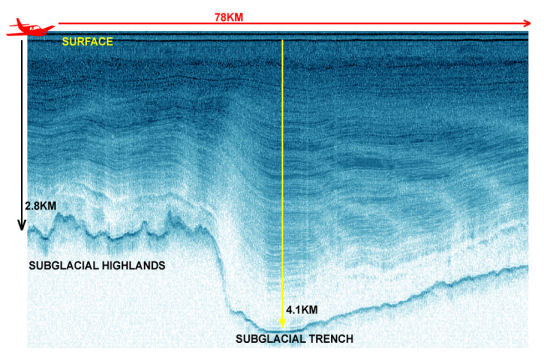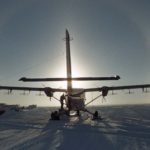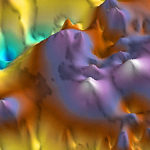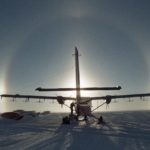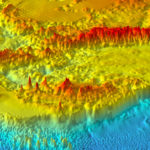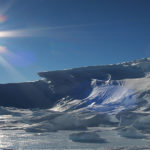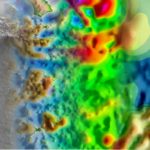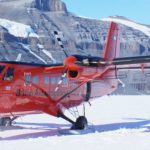The radar system is composed of a complex waveform generator, signal processor, data handler and data store. It includes a high power transmitter (up to 66dBm or 4kW), a low noise receiver and frequency domain digital processing of the received signal. The carrier frequency is 150MHz and the bandwidth is 10MHz limited mainly by the folded dipole aerials. Along-track resolution is governed by the sample period, pre and post-processed signal stacking and aircraft speed.
The sample period is 64uS, and the hardware stacking typically 25 giving a pre-processed along-track resolution of ~10cm. Data is stored on dual-redundant removable media. For the figures given above a 4.5h flight will generate around 150GB of data.
Post-processed resolution is usually set to about 1m. Depth resolution is governed by pulse type, period and bandwidth. With this system it is typically 8m. Positional accuracy using differential GPS gives cm accuracy.In polarimetric mode pulses are transmitted alternately from orthogonally orientated aerials and returning coherent signal phase and amplitude is received and recorded via similarly oriented aerials. The sample rate does not change between modes, the along-track resolution is halved but the received signal data rate is doubled, therefore the overall volume of data captured on a typical flight remains the same.
In polarimetric mode pulses are transmitted alternately from orthogonally orientated aerials and returning coherent signal phase and amplitude is received and recorded via similarly oriented aerials. The sample rate does not change between modes, the along-track resolution is halved but the received signal data rate is doubled, therefore the overall volume of data captured on a typical flight remains the same.

